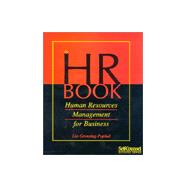Designed to complement Self-Counsel's Human Resources Forms and Disk series, The HR Book contains checklists and completed samples of all the forms necessary to maintain a streamlined, productive work force. This book covers all the essentials of human resources management:
-- Preparing for hiring
-- Knowing the law
-- Developing interview and questioning skills
-- Selecting your candidates
-- Starting employees on the right track
-- Conducting performance evaluations
-- Maintaining a fully functioning work force
Written for businesses of all sizes, this comprehensive handbook instills confidence and provides advice for building a qualified, talented, and motivated work force.








